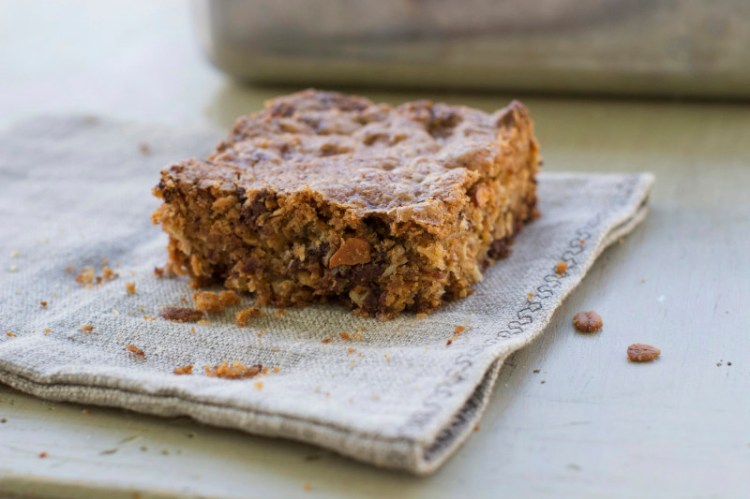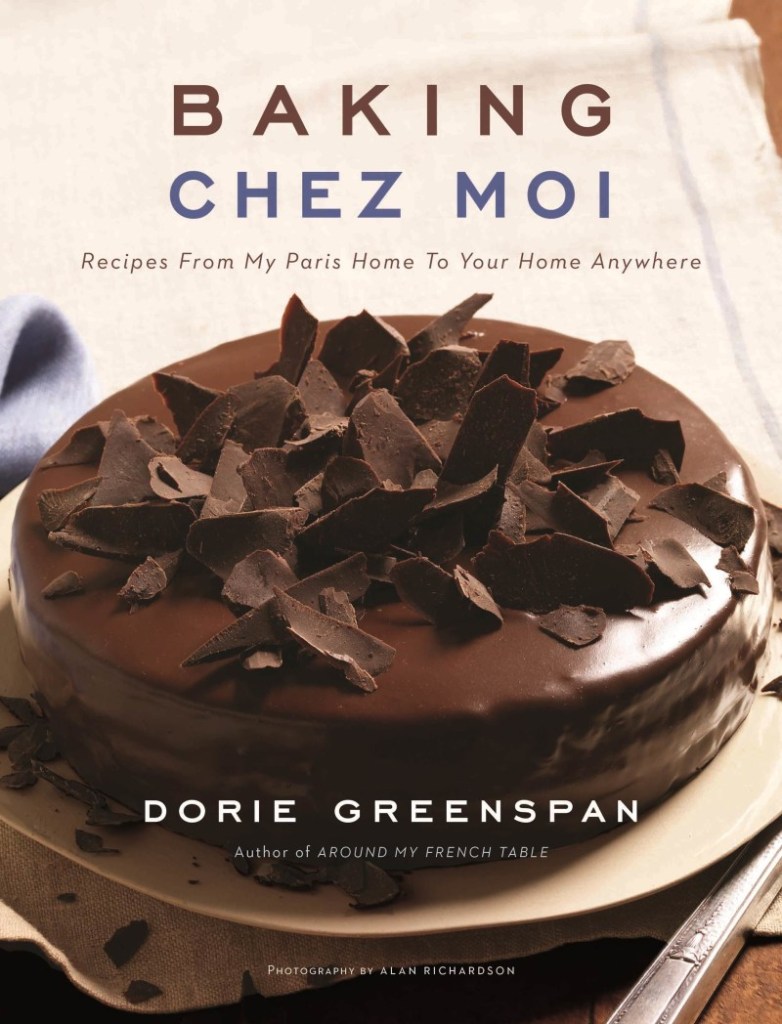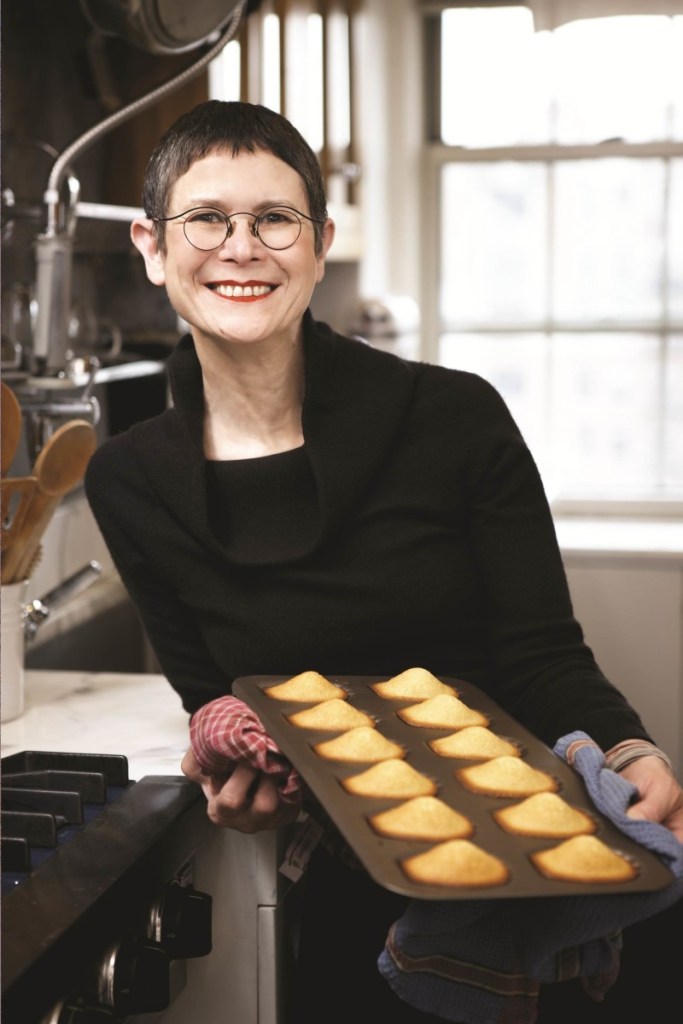The annoying thing about Dorie Greenspan is that no matter how much you don’t like to bake, aren’t good at baking, don’t even want to bake… If you listen to her long enough, you’ll find yourself hankering to get your hands into some flour, certain even you can whip up some laborious, glorious baked treat. Her can-do attitude is that infectious.
It’s OK to hate her just a little bit for it.
Luckily, Greenspan’s latest cookbook, “Baking Chez Moi” (Houghton Mifflin Harcourt, 2014), has little tolerance for time- or skill-intensive baking. The idea for it came from the realization that even in France — the country from which much of her culinary inspiration is drawn — home cooks lack the time, tolerance and skill for anything but simple home baking.
“Real French people don’t bake! At least they don’t bake anything complicated, finicky, tricky or unreliable,” she writes in the book. “Pastry, the fancy stuff, is what pastry shops are for, and France has plenty of them.”
We spoke with Greenspan recently and asked her what desserts Americans are too intimidated to make at home, but really should. The lesson, of course, is that the more you bake, the better you bake. She suggests picking a handful of easy items to master.
“It’s really great to have these basic building blocks that you feel really good about and confident about. And then you can play with what you’re making. Then the pleasure of baking is doubled,” she said in a telephone interview. “It’s not really just tackling something you’re afraid of. It’s building your toolbox so that you’re free to create things on your own.”
Where to start? Her suggestions (condensed and edited for clarity):
PIE DOUGH
“The thing I hear most often is, ‘I’m afraid to make pie dough. I’m afraid to make tart dough.’ And I sympathize with that because I, too, was afraid. Now I love doing pies and tarts. It’s one of these things, you practice. Even the failures taste good. But it gives you such a sense of satisfaction to make a tart or pie. This is something that’s worth tackling. It’s worth getting over your fear.”
BISCUITS
“I think it’s the same with biscuits and scones. I put them together because like pie dough and tart dough, they are similar in technique. I love making biscuits and scones because it’s messy. I love anything that I can make with my hands. Part of the pleasure of cooking and baking is working with the ingredients, touching them with your hands, transforming them yourself. You do that with biscuits and scones. They’re also a good beginner’s project because almost anything you make with baking powder will rise. You can overwork the biscuits or scones, but it’s still going to come out great. Again, it’s one of those things that once you nail it, it’s yours forever.”
PATE A CHOUX
“I am madly in love with pate a choux, cream puff dough. Crazy about it. It is so simple to make and it’s so impressive. It’s a dough that makes just about anything. It makes cream puffs. It makes eclairs. It makes doughnuts. I mean, you fry the dough. You can boil the dough. There’s something called Parisian gnocchi where you boil the cream puff dough and put a bechamel sauce over it and cheese. This is the dough that always looks fancy because it puffs. And it can be shaped. You can fill them with salads, like shrimp salad. This is another dough worth learning. Pack up your fears and go to cream puff land. The whole thing actually takes just eight minutes.”
PASTRY CREAM
“Everyone should learn to make pastry cream. You just have to stir. This is a recipe that, learn how to do it and the world is yours. So you can fill your cream puffs with the pastry cream. You can fill your tart dough with pastry cream and top with fruit and you have a classic French fruit tart. And pastry cream is the basis for the best, best chocolate pudding.”
GANACHE
“It’s not really baked, but it’s something as a baker you really want to know how to make. It can be a filling for a cake. It can be poured into that beautiful tart shell you just baked and it becomes an elegant tart. You can make a thin ganache and use it as a glaze on a cake. I dip cookies in it. I dip tops of cupcakes in ganache. It’s also the basis of chocolate truffles. Essentially it is an emulsion of heavy cream and chocolate. You just have to stir.”
CREME CARAMEL
“The idea of cooking sugar is frightening to a lot of people. Sugar… We all love to eat it, but we’re afraid to cook it. Creme caramel is a great place to start getting over your fear of cooking sugar. No thermometer is needed. You just cook the sugar and watch the color and say, ‘I like that color. That’s enough.’ The cream you mix into it is simple. You just mix it in. It’s a great introduction to caramel.”
GRANOLA CAKE
“I created this cake to do something fun and unusual with the granola I was making for friends, and now I just keep making it, whether I have homemade granola or not,” Dorie Greenspan writes in her new cookbook, “Baking Chez Moi” (Houghton Mifflin Harcourt, 2014). “I think of this as a snack cake and nibble it out of hand, but that’s so not French. When I serve it in Paris, I cut it into 2-inch squares, put them on plates, top with ice cream and serve with forks and spoons.”
Start to finish: 1 hour (20 minutes active)
Servings: 16
1/2 cup (1 stick) unsalted butter, room temperature, plus extra for the pan
1 cup (136 grams) all-purpose flour
1/4 teaspoon baking powder
1/4 teaspoon baking soda
1/4 teaspoon ground cinnamon (if granola is not spiced)
Pinch of freshly grated nutmeg (if granola is not spiced)
1 cup (120 grams) granola, preferably homemade
4 ounces (113 grams) bittersweet, milk or white chocolate, finely chopped
1/2 cup (60 grams) shredded coconut, sweetened or unsweetened
1/2 cup (100 grams) packed light brown sugar
1/4 cup (50 grams) granulated sugar
1 large egg, room temperature
1 1/2 teaspoons vanilla extract
1/4 teaspoon fine sea salt
Set a rack on the oven’s middle shelf, then heat the oven to 325 F. Coat an 8-inch square baking pan with butter, then line it with kitchen parchment or waxed paper.
In a small bowl, whisk together the flour, baking powder, baking soda and cinnamon and nutmeg, if using. In another bowl, toss together the granola, chocolate and coconut.
Working in a stand mixer fitted with the paddle attachment, or in a large bowl with a hand mixer, beat the 1/2 cup of butter at low-medium speed for 2 to 3 minutes, or until soft and creamy. Add both sugars and beat for 2 minutes. Add the egg and beat until the mixture is smooth, about 2 minutes more.
Beat in the vanilla and salt. Reduce the speed to low and add the flour mixture, mixing only until it disappears into the batter. Add the granola mixture, again mixing just until incorporated. Scrape the batter, which will be very thick, into the prepared pan. Smooth the top of the batter to make sure it gets into the corners.
Bake the cake for 35 to 40 minutes, or until the top is honey brown and sugar-crackly; a skewer inserted at the center should come out clean. Transfer the pan to a rack and let rest for 10 minutes, then run a knife around the edges of the cake and unmold it onto the rack; invert and cool to room temperature on the rack.
The cake is very moist and will keep, wrapped in plastic, at room temperature for about 4 days. You also can wrap it airtight and freeze it for up to 2 months; defrost it still wrapped.
Nutrition information per serving: 200 calories; 100 calories from fat (50 percent of total calories); 11 g fat (7 g saturated; 0 g trans fats); 25 mg cholesterol; 24 g carbohydrate; 2 g fiber; 12 g sugar; 3 g protein; 65 mg sodium.
Recipe adapted from Dorie Greenspan’s “Baking Chez Moi,” Houghton Mifflin Harcourt, 2014
Send questions/comments to the editors.




